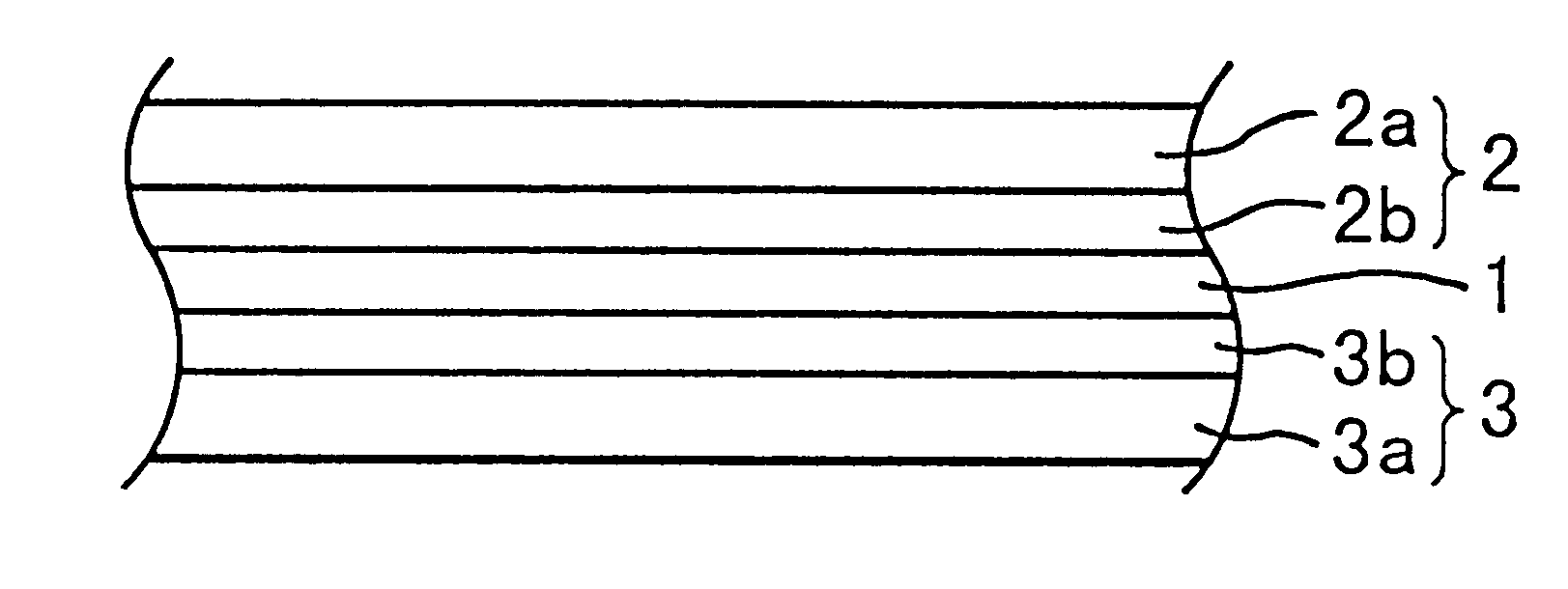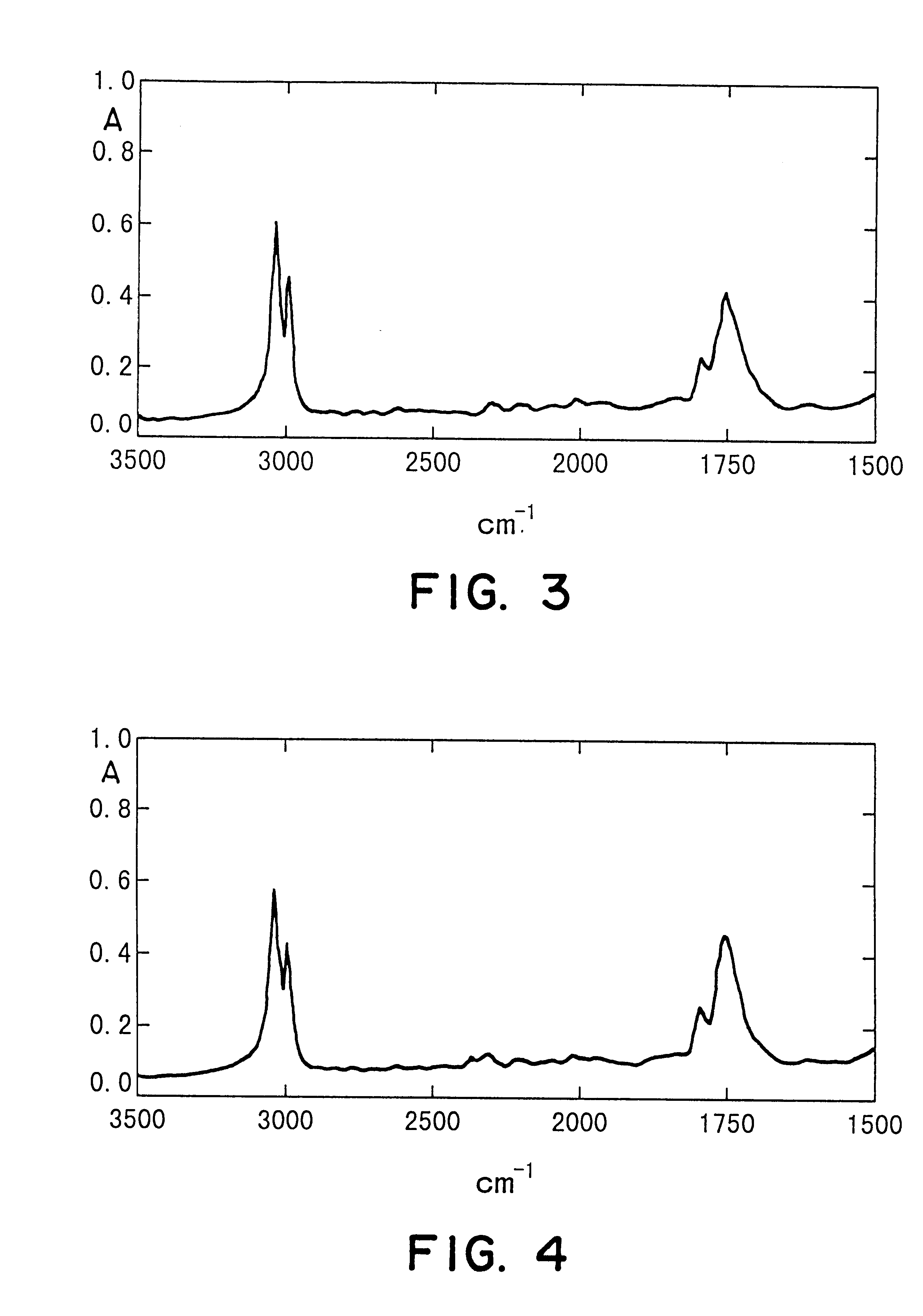Vinylidene fluoride copolymer for gel-form solid electrolyte formation, solid electrolyte, and battery
a technology of solid electrolyte and vinyl fluoride, which is applied in the direction of non-aqueous electrolyte cells, non-metal conductors, cell components, etc., can solve the problems of increasing the internal pressure of the battery, leakage of a readily ignitable organic electrolytic solution outside the battery, and leakage of electrolyte, etc., to achieve the appropriate level of ionic conductivity, excellent adhesion, and excellent heat resistance
- Summary
- Abstract
- Description
- Claims
- Application Information
AI Technical Summary
Benefits of technology
Problems solved by technology
Method used
Image
Examples
reference example 1
Into an autoclave having an inner volume of liter, 1036 g of deionized water, 0.80 g of methyl cellulose, 3.6 g of diisopropyl peroxydicarbonate, 3.6 g of flon 225cb, 8.0 g of monomethyl maleate, 372 g of vinylidene fluoride and 28 g of hexafluoropropylene were charged and subjected to 86 hours of suspension polymerization at 28.degree. C. After completion of the polymerization, the polymerizate slurry was dewatered, washed with water and dried at 80.degree. C. for 20 hours to obtain a polymer powder. The polymerization yield was 80 wt. %, and the obtained polymer showed an inherent viscosity of 1.24.
reference example 2
Into an autoclave having an inner volume of 2 liter, 1036 g of deionized water, 0.80 g of methyl cellulose, 3.6 g of diisopropyl peroxydicarbonate, 3.6 g of flon 225cb, 4.0 g of allyl glycidyl ether, 372 g of vinylidene fluoride and 4.0 g of trifluoromonochloroethylene were charged, and from a time of 2 hours after initiation of polymerization, 24 g of trifluoromonochloroethylene was added in division of 1.0 g each at an interval of 1 hour, to complete 60 hours of suspension polymerization at 25.degree. C. After completion of the polymerization, the polymerizate slurry was dewatered, washed with water and dried at 80.degree. C. for 20 hours to obtain a polymer powder. The polymerization yield was 75 wt. %, and the obtained polymer showed an inherent viscosity of 1.03.
reference example 3
Into an autoclave having an inner volume of 2 liter, 1036 g of deionized water, 0.80 g of methyl cellulose, 2.8 g of diisopropyl peroxydicarbonate, 2.8 g of flon 225cb, 104 g of hexafluoropropylene, 4.0 g of monomethyl maleate, and 296 g of vinylidene fluoride were charged and subjected to 64.5 hours of suspension polymerization at 28.degree. C. After completion of the polymerization, the polymerizate slurry was dewatered, washed with water and dried at 80.degree. C. for 20 hours to obtain a polymer powder. The polymerization yield was 80 wt. %, and the obtained polymer showed an inherent viscosity of 1.13.
PUM
| Property | Measurement | Unit |
|---|---|---|
| Thickness | aaaaa | aaaaa |
| Substance count | aaaaa | aaaaa |
| Substance count | aaaaa | aaaaa |
Abstract
Description
Claims
Application Information
 Login to View More
Login to View More - R&D
- Intellectual Property
- Life Sciences
- Materials
- Tech Scout
- Unparalleled Data Quality
- Higher Quality Content
- 60% Fewer Hallucinations
Browse by: Latest US Patents, China's latest patents, Technical Efficacy Thesaurus, Application Domain, Technology Topic, Popular Technical Reports.
© 2025 PatSnap. All rights reserved.Legal|Privacy policy|Modern Slavery Act Transparency Statement|Sitemap|About US| Contact US: help@patsnap.com



